Have Some Standards!!
Nothing I say in this post is revolutionary. Nothing I say here is all that new. But what I will cover in this post needs to be repeated time and time again. Every new lifter that comes up through the ranks should be acquainted with good movement standards, and I just don’t see it happening as much as I’d like.
Movement standards are rules about how a lift should be performed. They have been discussed, revised, and developed over the decades so that every lifter knows what is expected of them when they perform a lift. This is assumed that the lifter is of normal function with no inherent anatomical restrictions. Inflexibility is not an inherent anatomical restriction. Missing one leg is.
To clarify, bad form is not necessarily a bad movement standard. Someone may successfully perform a squat, but their knees may cave in a bit, or they may start to collapse forward. They’ve still completed a squat, but they could improve their form (knees out and chest up, respectively, in this case). In contrast, someone could keep their knees out and chest up (good form), but fail to get low enough to consider their movement a squat. (bad movement standard)
As a general rule of thumb, having a bad movement standard will allow you to move more weight in the given exercise, while having bad form will generally limit your ability to move more weight.
Common Movement Standards
So what are some common standards? I give a brief description.
Squat
Lifter must squat down until the crease of the hip is at or below the top of the knee. These are the two points we are looking to get parallel in a “parallel squat”. Different powerlifting federations will have different rules regarding depth, but I and many others believe that the harder option is the better option.
A good, deep squat on the left, and an emphasis on the hip crease on the right.
Image from 70’s big.com, in an article discussing this same topic.
The crease of the hip and the top of the knee can be seen and judged, regardless of the size and dimensions of the lifter. If other biological markers are used, say the bottom of the hamstrings, then squat depth would vary among lifters – as those lifters with bigger hamstring would ironically not have to squat as low! Here’s another fantastic article on what I’m about to cover.
Biggest Common Infraction – Not squatting low enough! Enough of the excuses, I’ve heard them all —
Poor flexibility?
Work on it. A squat is a privilege, not a right. Why should people who lack proper mobility be rewarded with less work? If you can’t squat to proper depth, and as I mentioned you have no inherent anatomical restrictions, then your most important order of business is to work on proper depth. Don’t start bragging about your squat numbers, until you can actually squat. Need help on getting lower? Check out MobilityWOD.com for more than enough ideas.
Close enough to parallel?
Wrong. The definition of a parallel squat doesn’t leave room for interpretations. That’s why it’s a movement standard! If it was “close enough”, then you should have no problem squatting low enough. “Close” only counts in horseshoes and hand grenades.
It helps me get ready for bigger weights/jumping/unracking heavy weights?
I use to believe this too, and admittedly tried doing half and quarter squats with 400-500 lbs. It felt like it really worked . . . my ego. It was great to say you just moved 450 lbs in an exercise, but not nearly as much is accomplished as if you just squatted the weight to full depth. I can load up a bar to 500 lbs and roll it across the floor, but that doesn’t mean I got stronger from it. Speaking of bars on floors…
Deadlift
The lifter must stand up with the bar in one motion. The bar can slow down, but can not descend again until the lift is complete. Hitching, the act of bending the knees and scooping them under the bar, is prohibited. Trying to jerk the weight up and down in order to raise it, is also prohibited. This would violate the standard of allowing the bar to descend.
Biggest Common Infraction – Hitching is by far the most common violation that I see. Get yourself intimately acquainted with what a hitch looks like, as you want to avoid it.
Here is a video showing a severely hitched deadlift.
And while I’m no master at these movements, here’s my 500 lb deadlift in comparison. Even taken with a sumo stance, the knees stay back and hips extend in one smooth lift.
Why do people hitch? They same reason they don’t squat to parallel – they are using weights that are too heavy for them. But while a shallow squat will simply cause me to ridicule you, a hitched and jerky deadlift can have much more serious consequences. There is a video out there that gives the full story of a crossfit guy who put himself in a wheelchair for a year from a bad deadlift. I can’t find the link at the moment, but will post it here when I dig it up again.
Bench
As with the squat, different federations will have different specific rules. Generally speaking, you need to press the bar from chest to arms length under your own power, while keeping your feet, hips, and upper back on the bench.
Biggest Common Infractions – The two I see a lot are lifting the hips off the bench, and getting excessive help from your spotter.
For those unfamiliar, let me explain why lifting the hips off the bench is advantageous in the first place. If you’ve benched, then you might possibly have also performed the decline press.
the decline press. notice the hips are very high in relation to the shoulders.
If not, let me tell you that you’ll be able to move more weight on the decline press than on the regular bench press. Your body has better leverage to press more weight.
What does this mean on the regular bench press? It means that lifting your hips 10 feet off the bench will give you greater leverage. This is great to move more weight! But, it’s not a bench press anymore, so don’t call it as such! This standard has no room for interpretation. Your butt is either on the bench, or it’s not.
The next infraction I mentioned is excessive spotting. Your spotter is there for three primary jobs. Helping you unrack the weight (if you want), helping you re-rack the weight (if you want), and picking the bar up off of you if you fail to make the lift (I hope that’s what you want). Past that, any contact with the bar during the press from a spotter will nullify the lift.
If your spotter touches the bar in any way shape or form while you are pressing, then sorry Charlie, the lift was no good. The old line of “he was barely helping” is just an excuse. The lift can’t be judged fairly if there’s a likely chance that the press was assisted. The bench press is a one person lift, not two.
An actual two person lift, the two man clean and jerk
Picture from GoHeavy.com
The best summation of all this comes from an article by Dave Tate and Jim Wendler on bench press spotting –
“Having your hands on the bar THE WHOLE TIME is just as bad as not having a spotter at all. The lifter can’t see (you are giving him Chinnuts), and he can’t focus on the task at hand. Furthermore, 100% of the time, the spotter is helping the lifter lift the barbell. So if you do this, not only do you want the lifter to get hurt, you want them to get weak. Hence, you are the worst training partner or spotter ever.”
Beautifully put.
Last note on the bench, many contests will also forbid bouncing the bar off of your chest as you press it. Many federations will actually require you to pause the bar on your chest for a split-second while waiting for a “press” command from a judge.
You can watch me bench in the video below. Watch how I am required to pause on the chest before given the command to press. Ever done that before in your lift? It’s much harder!
Snatch
The lifter must lift the bar from the ground to overhead in one motion.
Biggest Common Infraction – Without a doubt, it’s pressing out the snatch. This means that you catch the bar with bent arms, then straighten them out as you stand up. The increase in popularity of the Olympic lifts over the years is fantastic, but athletes must be kept safe. The position of the bar at the completion of a snatch is quite close to the head and neck. If the arms aren’t fully locked out, then one risks serious injury.
If you need examples of pressed out snatches, or just ridiculousness in general, check out this video –
Why have movement standards?
Many will say that I’m being too anal with these movement standards, or that it doesn’t matter that much. Or my favorite line is, “People’s form inevitably breaks down during max lifts”. Yes, that’s true that one’s form breaks down during a max attempt, but again please refer to my description of form vs. standards. You should still be performing up to proper standards.
And as for breakdown, please tell me how bad Benedikt’s form and movement standards break down during this World Record Deadlift (Hint, they don’t. Champions strive for the best form and movement they can).
Also of note is the #1 comment for the video –
“He deadlifts 1015 lbs and then instead of dropping it, he gently puts it back on the ground. You better be taking notes the wusses that are dropping 135 lbs”
That sound you hear is me slow clapping to this wonderful comment.
Anyway, onto the reasoning for movement standards –
1. Give an accurate comparison – This is probably one of the biggest reasons to have standards. In the very least, it’s the reason people like myself write articles like this. Nothing gets the blood boiling more than someone who says “Yeah I squat X amount of weight”, only to find out their squat is barely a dip (What I like to called a ‘weighted curtsy’). It’s an insult to those athletes that have actually put in the hard work to squat X amount of weight in the proper way.
Besides keeping things fair, if you allow me to wax sentimentally, the concept of movement standards allows us to compare our lifts to legends through the ages. You can watch video of a great lifter like Tommy Kono, and compare your lifts directly (I still have a ways to go!), and then head into the gym and work to improve.
Good movement standards connect us with the legends of our rich weightlifting past. Bad movement standards disconnect us, all for our own ego’s sake.
2. Keep you safe – Ok, maybe this is the biggest reason to have standards. The guidelines are not put in place to ruin your day. Hitching a deadlift can hurt you severely. Catching a snatch with bent arms can break your head if you drop the bar. It’s harder to train and get awesome when you’re injured.
3. Get you strong – Squatting high or bridging your hips 10 feet in the air for the bench limits the work done on the various muscles of the body. In the long run, you will become stronger if you adhere to the movement standards. And trust me, lifting is a long run. You are cheating yourself from progress.
Let me note that this does not mean that those violating movement standards are not strong. They might still be very, very strong. And the shame is that they’ll use this strength as a rational for continuing to lift with bad form and bad movement standards.
I didn’t touch upon the clean and jerk, but I’ll say it’s the one lift that I see people moving tremendous weights with such terrible, terrible form. This is seen so often, that the term “football lifting” or “bro lifting” generally describes this big, heavy, sloppy lifting. Generally accompanied by the whole team screaming and shouting around the lifter.
Again, I’ll repeat, this guy is very, very strong. He could clearly cause bodily harm on the football field. And he’s not necessarily interested in what his clean would be in a competition. But by catching this clean on his toes, feet splayed out, with his elbows not nearly high enough, he puts himself at a much higher risk for injury. Why injure yourself in the weight room, so that you can’t perform on the field?
If your clean looks like this, it needs some work.
All this talk about cleans is a talk about good form. They are still performing the clean, it meets all the standards, but their form is atrocious. All of them could move even more weight with better form. Are we starting to see the differences between form and standards?
Why People Stray
Failing to meet movement standards has been around for as long as weightlifting. I find it an interesting and frustrating situation any time it occurs. Some people really don’t know where their body is, and therefore don’t know what they’ve done. Others are just not being honest with themselves, and think it’s “close enough”. Others want to keep moving heavier and heavier weight, even if it means they shouldn’t be.
But I don’t want to simply write it off as an out of control ego. Sometimes, it’s a bit more complicated than that.
To go back to the video above of the football power clean. It is an electrifying atmosphere. Everyone is cheering and clapping and routing for the lifter. You can feel the energy. Now, in a situation like that, do you think that ANYONE would want to step forward against the entire group and say something like “well, great effort, but let’s not splay your feet out like you’re trying to do a split.” No, people don’t work that way. Everyone will continue to clap and cheer because the athlete got the weight up.
Now, take that same situation and replace the clean with a back squat. The athlete descends with the bar, fails to make proper depth, and then spits and struggles to stand up again with the weight. All the while, his or her teammates are screaming words of encouragement – “you got it man!!”, “come on!!”, etc, etc, etc.
The athlete finally stands up with the weight after an eye-popping struggle and racks the bar. Is anyone in that group going to tell them – “great fight, but you didn’t get low enough.” If they were good teammates and training partners, they would, but I have seen far too many instances where everyone pats the athlete on the back and congratulates them on their new PR.
The group energy takes over. The athlete feels good, but he has been done a great disservice. He has been limited by his teammates, and he doesn’t even realize it.
No one wants to be the bad guy. No one wants to tell someone that they gave it their all, but their all just wasn’t good enough.
Telling someone they didn’t go low enough in a squat, or they hitched their deadlift, or the pressed out their snatch, this isn’t being a bad guy. This is being a good coach. A good teammate. You are helping them identify and correct their weaknesses so that they can eliminate them.
Of all the athletes that I’ve coached, the best ones are the ones that trust in your expertise and listen to your cues and corrections. The bad ones are the ones that argue every suggestion you offer, or dismiss cues entirely, or say such loser lines like “knees out? easier said than done!”
So good form and good standards are a responsibility of both the coach and the athlete. You should always believe you can improve and strive for that. And you should always help your fellow lifters and teammates improve as well. We all rise up together. Bad standards and fake PRs pull us all down.
Conclusion
This is not an exhaustive list of the rules and regulations regarding the lifts. But please note that there are standards, and that there’s a reason for those standards.
I have not covered various standards for gymnastics and acrobatics in this article. That is another article in itself. The barbell lifts warrant a blog post first, as they often have a greater risk for injury when done improperly.
If you are interested in gymnastics standards, there’s an entire federation that determines this stuff out! FIG (Fédération Internationale de Gymnastique) posts out their code of points for each event so that judges can accurately compare each athlete and judge them fairly. Check out their page here.
I’ll cover those details in a future article. For now, I hope I’ve enlightened some people.
– Just because you go down and up, doesn’t mean you squatted the weight.
– Just because you stand up with a weight, doesn’t mean you deadlifted it.
– And just because you got a barbell over your head, doesn’t mean you snatched it.
Strive for good form. Strive for good standards.
-Jim


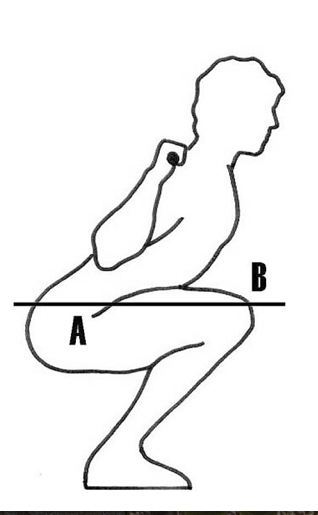
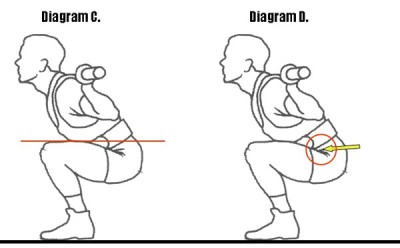
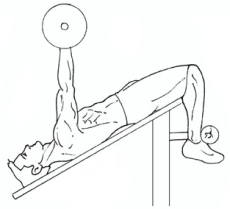
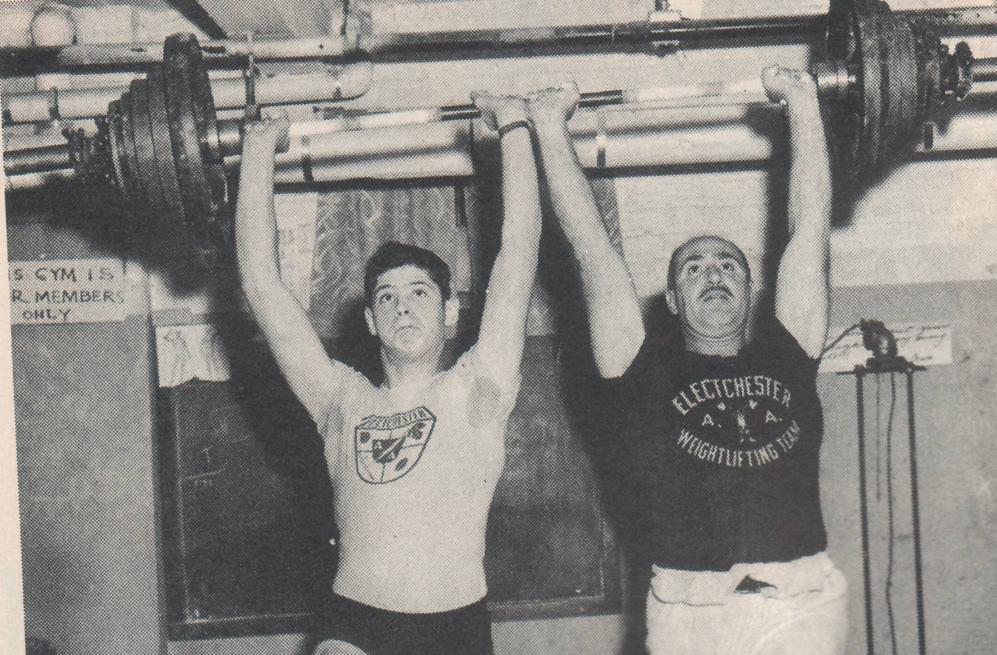

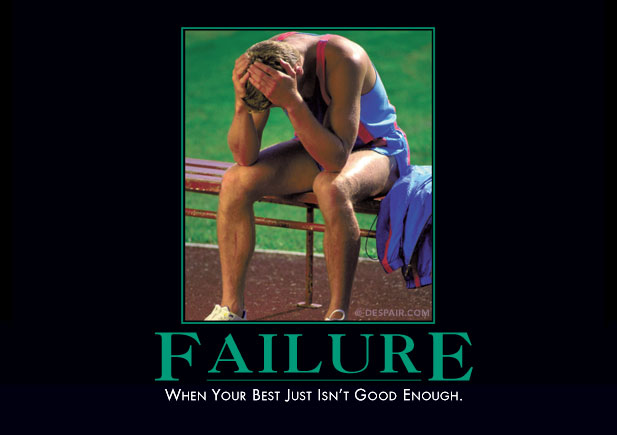
Great article!
Important principles and great reminder.
Awesome article. I shared it with my people… it may help them out. It certainly amused and horrified.
AHAHAHAHAHAHAHAHAHA paper towels! PAPER TOWELS!!!
Great post, I hope when I can get a gym and spotter to squat in that they give me honest feedback about depth.
Get a camera if you don’t have a spotter to tell you!
-Jim
Great article! Love bashing crossfit and their b.s PR’s
Nick –
It was not my intention to bash CrossFit with this article, just bad movement in general. There are bad athletes in and out of CrossFit, just as there are awesome athletes in and out of CrossFit.
That said, this article did cause me some issues with Xfit HQ.
-Jim
it reminds me again. thanks Jim for the heads up.
Great article and one that should probably be re-read every once in a while – I was going to write something similar but will send folks this way, thanks!
great article, the more i read on your site the more impressed i am. so in depth!
what is with diamond dave, omg, he must have injuries on the daily in his gym
I just couldn’t go away your website before suggesting that I extremely enjoyed the usual information a person supply in your guests? Is gonna be again incessantly in order to check out new posts
Full length mirrors are great for spotting errors in your form too. That is with exercises that you can see yourself. The benchpress obviously wouldn’t be one of them. Great article. More people need this. I can remember a classmate in my high school weight-lifting class that would severely arch his back during the benchpress. We would tell him that he was going to injure his back. But he wouldn’t listen.
I personally believe that one should lift weights utilizing a slow, smooth, controlled movement that allows them to stop the weight at any point during the rep. If you have to jerk, bounce, hop, etc. the weight, then one is using momentum instead of muscles to move the weight. Granted this doesn’t apply to a very small handful of powerlifts such as the snatch or clean as momentum does play a small part, but in general most people are moving the weight around much to fast without proper control on almost every lift.
72tp2f
wkt0q2
cx867f
e8zqiw
anf3j7
cjchu5
yz6x5w
ta3vxg
6n8yym
r1x0d7
bv37j5